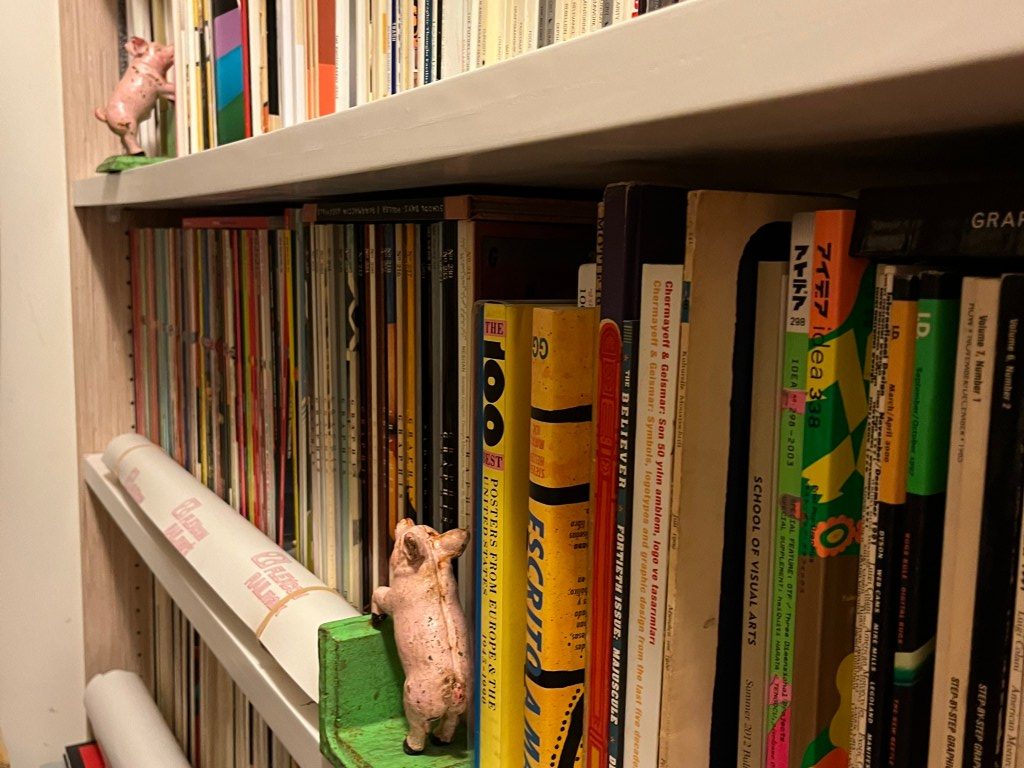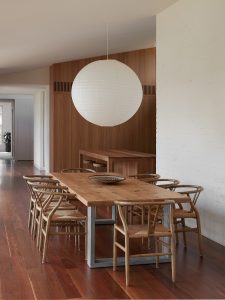“If you don’t want those sagging bookshelves, get rid of your books,” declared my carpenter, who five years earlier had constructed 350 linear feet of gorgeous built-ins in my living room and library, with an additional 100 feet in the walk-in closet.
“You don’t read them, do you?”
“Hmm,” I said, “No. But I do refer to them …”
I’ve heard the same bit of pratical advice my entire life as a collector, and I’ve thinned out at least 2000 books five years ago. But there are still many rarities remaining.
“Oh, bother,” sighs Winnie the Pooh when logic is too logical.
Bookshelves are like aging baby boomers: Gluttony equals excess weight equals sagging or worse. Ugh.
So, this week I am launching what may or may not become a series titled “Oh, Bother,” on “dietary” tips for graphic design mavens and collectors who are obsessively compulsive and fatally acquisitive (all you Instagram/Twitter fiends know exactly who you are) about how to store your stuff from the destructive inevitability of time and gravity.
Today: The sagging bookshelves saga (in pictures).


Problem: On the left these adjustable wooden shelves were attached to the frame of the bookcase with nickel and plastic shelf support pegs that fit into four lined-up holes on either end. Easy to install, there is one flaw: Load capacity. These units were never made for heavy books and lack the necessary support to maintain the stress of all these overweight objects, including newspapers and magazines. Over time the excess pressure caused the shelves to become unhinged.
Solution: On the right the answer was to increase the weight bearing capacity and adhere braces more securely to the wooden frame. A bit of sagging is still visible yet increased stress support strengthens the book case.

Problem: The Ikea unit above was built into a storage closet, the materials were not constructed to carry the extreme load that I ignorantly forced on them. The unit below, however, was custom designed by an architect and constructed by a master carpenter. However, rather than being made entirely with sturdy stationary solid wood, half of the shelving is moveable, albeit of better quality, employing a similar method and the same nickel pegs as the units above. You can see that the weight of the books has popped the moveable shelves from their holders (left) so that higher shelves slipped down and rest atop the books below. A disaster is in the making.
Solution: Oh, bother. Either leave it alone and allow gravity to take its course, or swap-out the pegs for sturdier brackets and then redistribute the weight. In this instance, as emotionally wrenching as it might be, the carpenter’s suggestion to remove some of the books must at least be seriously considered.
Or as the carpenter so wisely noted: “If you don’t read it, you don’t need it!”


If you have a question about archival containers, overstuffed storage bins, silverfish breeding grounds or anything else that has become a nagging/sagging problem, drop a line in my inbox (if you can find it). Send pics of your issues and we’ll try to fix ’em with pat bromides and useless technical advice.



